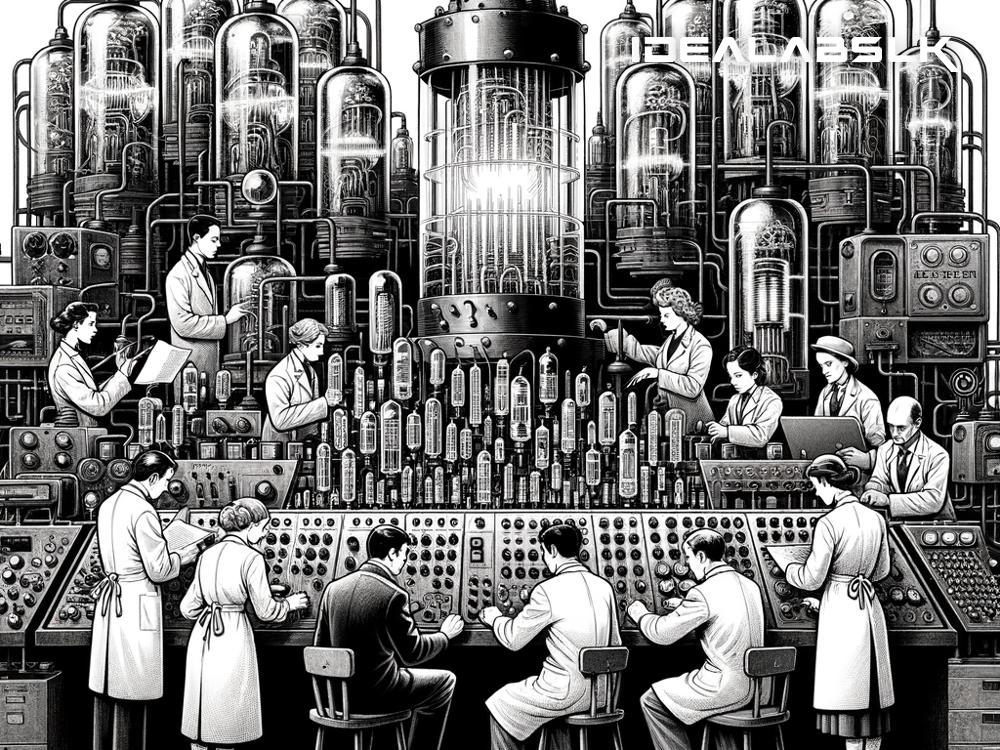Discovering the Giants of History: How the First Computers Were Sparked to Life During WWII
During the throes of World War II, amidst all the chaos and the clamor for victory, a silent but monumental invention was taking shape – the birth of the first true computers. Now, when we think about computers, images of sleek laptops or powerful desktops pop into our minds. But the computers that emerged during WWII were nothing like our modern gadgets. They were gigantic machines, often filling up entire rooms, and they were developed not for browsing the internet or playing video games, but for saving lives and strategizing war efforts.
The Driving Force
The necessity for these computing behemoths was born from the complexity and demands of warfare. Both Allies and Axis powers were in dire need of faster and accurate calculations for code-breaking, ballistic trajectories, and complex logistics. Traditional methods employed humans, often referred to as "computers," who manually calculated these equations. However, the sheer volume and complexity of calculations required a more rapid and accurate solution – enter the embryonic form of today’s computers.
The British Breakthrough: Colossus
On the British front, the most significant advancement was the creation of the Colossus. The story of the Colossus is often intertwined with the story of Bletchley Park, a secretive location where the brightest minds in Britain, including mathematician Alan Turing, gathered to crack the codes of the German Enigma and Lorenz machines. The Colossus was designed specifically to break the complex Lorenz codes.
The Colossus was a behemoth of valves, wires, and rotating tapes. Devised by engineer Tommy Flowers and the team at Bletchley Park, it was operational by 1943. Despite being a top-secret project, its success in deciphering messages provided invaluable intelligence that is often credited with shortening the war.
Across the Pond: The ENIAC
Meanwhile, the United States was developing its juggernaut: the Electronic Numerical Integrator and Computer (ENIAC). Conceived by John Mauchly and J. Presper Eckert at the University of Pennsylvania, the ENIAC was primarily designed to calculate artillery firing tables for the United States Army's Ballistic Research Laboratory.
Unlike the British Colossus, the ENIAC was a more versatile but equally massive machine. With a floor space equivalent to a sizeable suburban house, it was filled with thousands of vacuum tubes, miles of wiring, and weighed approximately 30 tons. Despite its intimidating size and complexity, the ENIAC significantly reduced the time needed for calculations, from hours or even days to mere seconds.
The Importance of These Developments
You might wonder, why are these bulky, ancient machines so important to us today? Simply put, they were the stepping stones towards the development of modern computing. They demonstrated that machines could be programmed to carry out complex calculations, laying down the foundational principles of computing that we rely on today.
Moreover, both the Colossus and the ENIAC highlighted the need for and potential of electronic computing. They directly inspired subsequent generations of computers, which became smaller, faster, and more efficient with each iteration. By solving the immediate problems of their time, these machines opened the door to the digital age, laying the groundwork for every computer that followed.
The Legacy
Post-war, the advances made by these machines were not immediately recognized due to the veil of secrecy surrounding them. It took decades for the significance of the Colossus and the ENIAC to be fully appreciated. Today, however, both are celebrated as monumental achievements in the history of computing.
The development of the first computers during WWII is a testament to human ingenuity under pressure. It is a remarkable story of how a world in turmoil spurred the creation of machines that would eventually revolutionize every aspect of human life. From the enormous, room-sized calculators of the 1940s to the powerful smartphones in our pockets, the journey of the computer is one of exponential advancement and infinite possibility.
So, the next time you swipe open your phone or boot up your laptop, spare a thought for the Colossus and the ENIAC. These WWII machines were the unassuming harbingers of the digital revolution, and without them, our world would be a very different place. In a way, they not only helped win a war but also paved the path for the technology-driven society we live in today.

